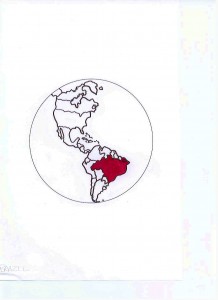BRAZIL
A. THE COUNTRY
The Federated Republic of Brazil is the world’s fifth largest country in both area and population and has one-half of the land surface and population of South America. Brazil in the world’s second highest consumer of illicit drugs and has the world’s highest rate of firearm homicide. The multi-party democracy is ambitious in reducing poverty and reforming social, fiscal and political policies. The gap between rich and poor is improving. There is vast natural resources and a large labour force to create an emerging economic superpower, especially in agriculture.
B. THE PEOPLE
Brazil is a melting pot of nations, and most Brazilians have some mixed heritage. the population is approaching 195.5 million and Portuguese is the official language.
Europeans represent ~50.2%, Mixed race (Metizo and Mulatto) ~38%,
African (descendents of slaves) ~6.4%, Asian (Arab, Japanese, Jews,
Chinese) ~5.6%, Amerindian (indigenous tribal groups) ~0.41%.
C. RELIGIONS AND CHRISTIANITY/PENTECOSTALISM
~91.4% claim Christianity, ~5.4% Ethnoreligionist, ~2.24% Non-religious,
~0.3% Other, ~0.29% Muslim, ~0.26%, Buddhist, ~0.06% Jewish, ~0.02%
Chinese, ~0.02% Baha’i, 0.01% Hindu.
In the Christian category:
~72.74% Catholic, ~16.34% Protestant, ~12.42% Independent, ~0.09%
Orthodox, ~0.07% Anglican.
Catholics in Brazil number more than in any other country, and the evangelical population is one of the largest in the world. Around 70% of ex-Catholics are now evangelicals. Evangelicals represent ~26.3% of the population. Charismatics are ~31.2% and of these 20.9% are Pentecostals. Other groups originating in Western society represent ~1.54%.
Donna Siemens
References:
http://en.wikipedia.org
Operation World, Jason Mandryk. Colorado Springs: Biblica Publishing, 2010

